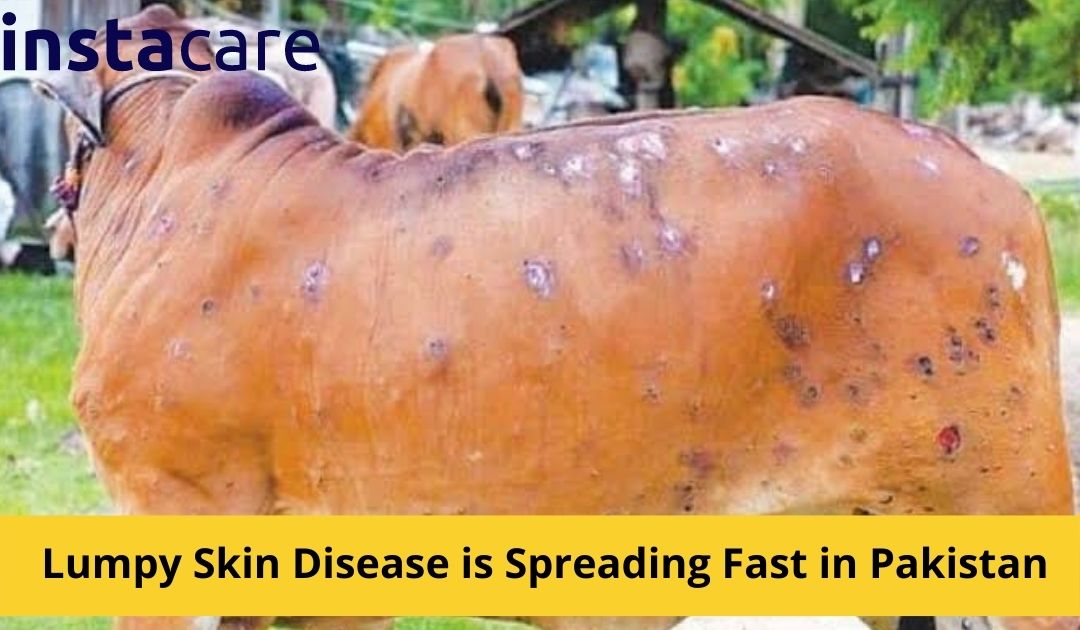Lumpy Skin disease (LSD) is an irresistible illness in cattle brought about by a virus of the family Poxviridae, also called Neethling virus. Biting insects (vectors) such as mosquitoes and biting flies are the primary carriers of lumpy skin disease among animals. Less frequently, the virus can be transmitted through direct contact with infected animals’ skin lesions, saliva, nasal discharge, milk, or sperm.
Symptoms of Lumpy Skin Disease Virus - LSD
Enlarged superficial lymph nodes and multiple nodules (measuring centimeters (1-2 in) in diameter) on the skin and mucous membranes are symptoms of the disease (including those of the respiratory and gastrointestinal tract). Infected cattle may also develop edematous swelling and lameness in their limbs.
The dermis and epidermis are involved in the nodular lesions, which may extend to the underlying subcutis or muscle. These lesions, which can occur anywhere on the body but are most common on the head, neck, udder, scrotum, vulva, and perineum, can be well-circumscribed or coalesce.
The onset of fever appears nearly one week after the virus infection. This initial fever can reach 41 °C (106 °F) and last a week. At this point, all of the superficial lymph nodes swell. The disease's characteristic nodules appear seven to nineteen days after virus inoculation. When the nodules appear, the discharge from the eyes and nose becomes mucopurulent.
Various Effects Of Lumpy Skin Disease Virus - LSD
The virus has significant economic implications because affected animals’ skin suffers permanent damage, lowering the commercial value of their hide. Furthermore, the disease frequently causes chronic debility, decreased milk production, poor growth, infertility, abortion, and, in rare cases, death.
Classification of Lumpy Skin Disease Virus - LSD
The virus that causes lumpy skin disease (LSDV) is a double-stranded DNA virus. It belongs to the Poxviridae genus capripoxvirus. Capripoxviruses (CaPVs) are one of the eight genera that comprise the Chordopoxvirus (ChPV) subfamily. The capripoxvirus genus includes LSDV, sheeppox virus, and goatpox virus. CPV infections are typically host-specific within specific geographic distributions, despite being serologically indistinguishable.
View More: What Is Monkeypox?
Structure Of Lumpy Skin Disease Virus - LSD
Capripoxviruses, like other viruses in the Poxviridae family, are brick-shaped. Capripoxvirus virions are distinguished from orthopoxvirus virions by their more oval profile and larger lateral bodies. Capripoxvirions have an average size of 320 nm by 260 nm.
What Does The Virus Genome Possess?
The virus has a 151-kbp genome with 156 genes and a central coding region bounded by identical 2.4 kbp-inverted terminal repeats. When LSDV is compared to chordopoxviruses of other genera, there are 146 conserved genes. These genes encode proteins involved in transcription and mRNA biogenesis, nucleotide metabolism, DNA replication, protein processing, virion structure and assembly, viral virulence and host range, and viral virulence and host range. LSDV genes have a high degree of collinearity and amino acid identity with the genes of other mammalian poxviruses within the central genomic region. Suipoxvirus, yatapoxvirus, and leporipoxvirus are viruses with similar amino acid identities. However, collinearity is broken down into terminal areas.
Poxvirus homologs are either absent or share a lower percentage of amino acids in these regions. Most of these differences are likely due to genes involved in viral virulence and the host range. LSDV is unique to Chordopoxviridae because it contains homologs of interleukin-10 (IL-10) binding proteins, IL-1 binding proteins, G protein-coupled CC chemokine receptor, and epidermal growth factor-like protein, all of which are found in other poxvirus genera.
View More: Social Problems Of Pakistan
Treatment And Prevention Of Lumpy Skin Disease Virus - LSD
There is no treatment found yet for lumpy skin disease. In contrast, Nonspecific treatment (antibiotics, anti-inflammatory drugs, and vitamin injections) is typically used to treat secondary bacterial infections, inflammation, and fever and improve the animal's appetite.
Conclusion!
After knowing all about lumpy skin Disease LSD and the structure, genome, and classification of Lumpy skin disease virus LSDV, everyone should be aware of this virus and take preventive measures to save the cattle.
Please book an appointment with the Best General Physician in Lahore, Karachi, Islamabad, and all major cities of Pakistan through InstaCare, or call our helpline at 03100002273 to find the verified doctor for your disease.

